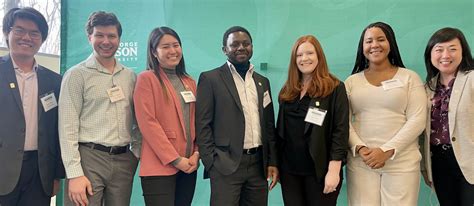Introduction
The George Mason University Conference on Digital Learning, held annually in Fairfax, Virginia, brings together leading researchers, practitioners, and industry experts to delve into the transformative power of digital technologies in education. This year’s conference focused on the theme “Interdisciplinary Frontiers in Digital Learning,” highlighting the convergence of disciplines to drive innovation and accelerate learning effectiveness.

Convergence of Disciplines: A Catalyst for Innovation
The conference opened with a keynote address by Dr. Sanjay Sarma, Vice President for Open Learning at MIT, who emphasized the importance of interdisciplinary collaboration in solving complex educational challenges. He shared examples of how MIT is pioneering cross-disciplinary approaches, such as combining social sciences, computer science, and engineering to develop immersive learning environments.
Technologies Transforming Learning Experiences
A central theme throughout the conference was the transformative impact of emerging technologies on learning experiences. Attendees explored the latest advances in:
- Artificial intelligence (AI): Using machine learning algorithms to personalize learning, provide real-time feedback, and automate administrative tasks.
- Virtual reality (VR): Creating immersive learning environments that allow students to engage with complex concepts and simulations.
- Augmented reality (AR): Superimposing digital information onto the real world, enhancing learning through interactive experiences.
- Blockchain: Securing and verifying educational records, enabling transparent and tamper-proof credentialing.
Benefits for Students and Educators
The conference highlighted the numerous benefits of digital learning for both students and educators:
- Enhanced engagement and motivation: Digital technologies make learning more interactive, personalized, and accessible.
- Improved learning outcomes: Studies have shown that students who engage in digital learning perform better on standardized tests and have higher retention rates.
- Personalized learning pathways: Digital platforms allow students to tailor their learning experiences to their individual needs and interests.
- Reduced costs and increased accessibility: Digital learning removes geographical barriers and makes education more affordable for students worldwide.
Interdisciplinary Research and Application
The conference emphasized the need for interdisciplinary research to fully exploit the potential of digital learning. Attendees shared their insights on:
- Cognitive science and educational psychology: Understanding how learners interact with digital technologies and how to optimize their learning experiences.
- Computer science and data science: Developing innovative algorithms, analytics, and simulations to enhance digital learning platforms.
- Communication and media studies: Exploring the role of digital storytelling and social media in engaging students and promoting learning.
Tables of Key Findings
| Technology | Benefit | Example |
|---|---|---|
| AI | Personalized learning | Adaptive learning systems that adjust to students’ individual needs |
| VR | Immersive simulations | Virtual field trips that allow students to explore real-world environments |
| AR | Interactive experiences | Augmented textbooks that provide additional information when viewed through a smartphone |
| Blockchain | Secure credentialing | Digital diplomas that are tamper-proof and easily verifiable |
| Interdisciplinary Field | Contribution to Digital Learning |
|---|---|
| Cognitive science | Understanding how learners process and retain information in digital environments |
| Computer science | Developing innovative algorithms and data analysis tools to enhance digital platforms |
| Communication studies | Exploring the role of digital storytelling and social media in engaging students |
Frequently Asked Questions
Q: How can I incorporate digital learning into my teaching?
A: Start small by incorporating a few digital tools into your existing lessons. Attend workshops and consult with educational technology experts for guidance.
Q: What are the challenges of interdisciplinary research in digital learning?
A: Coordinating projects across different disciplines with varying methodologies and perspectives can be difficult. However, the benefits of collaboration outweigh the challenges.
Q: How can I ensure digital learning is accessible for all students?
A: Invest in assistive technologies, provide training for students with disabilities, and work with vendors to ensure platforms are inclusive.
Q: Is digital learning replacing traditional face-to-face instruction?
A: No, digital learning is not intended to replace traditional instruction but rather to enhance and complement it. It allows for greater flexibility and individualized learning experiences.
Q: What is the future of digital learning?
A: Digital learning will continue to evolve, driven by advancements in AI, VR, and other emerging technologies. It will become increasingly personalized, immersive, and accessible to all learners.
